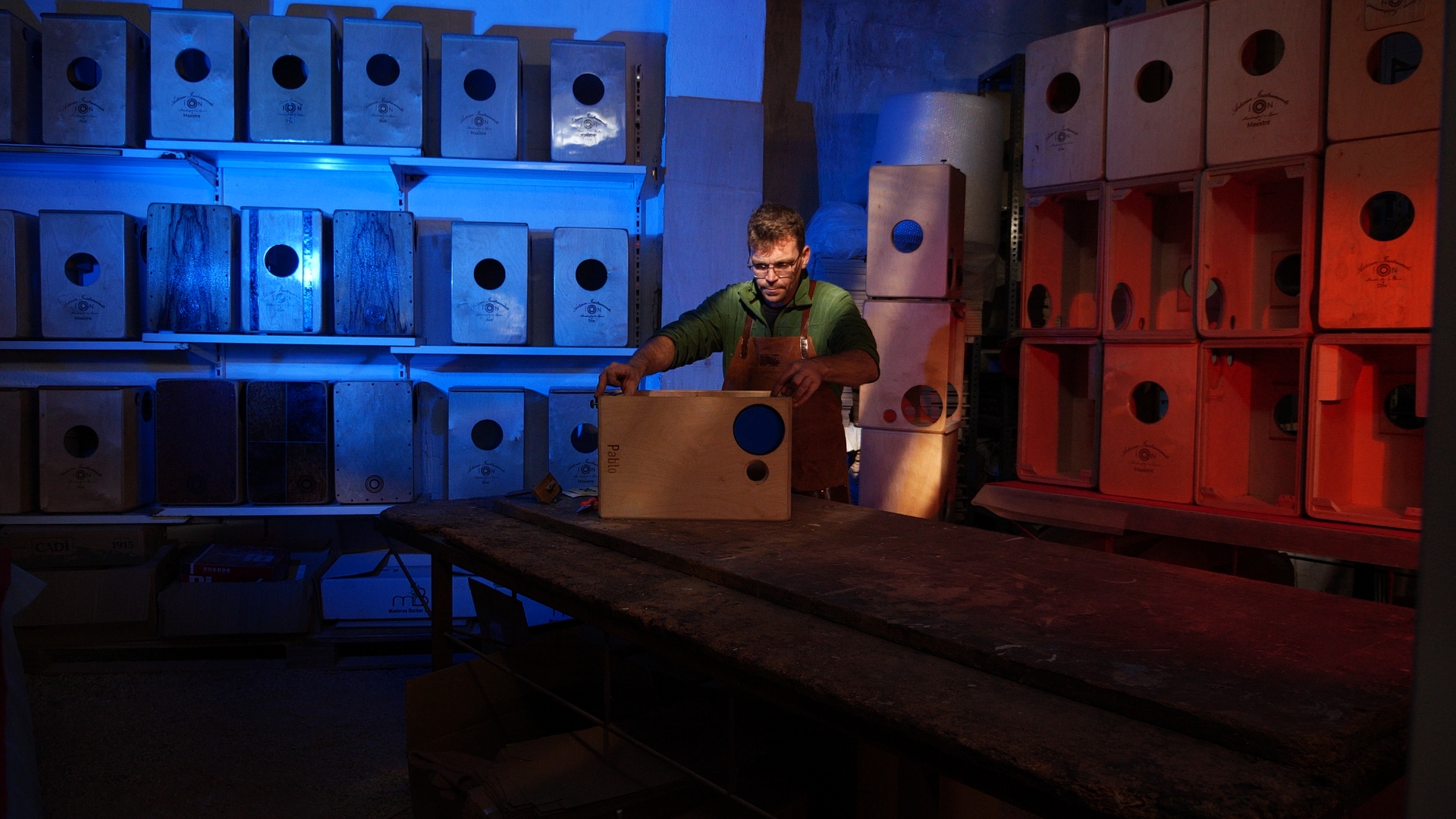

The flamenco cajon is a wonderful percussion instrument and by treating it well, you will be sure to get many years of enjoyment out of it. There are many things to consider, so our experts at +íon percussion have put together a guide to help you care for and protect your flamenco cajon. Read on!
1. Never leave it out in the sun for extended periods
Wood as a material is sensitive to temperature changes, which can alter its structure. It is therefore essential to avoid exposing your cajon to the sun for too long, and it should also never be left in the car without its bag, as the wood is liable to be exposed to high temperatures.
2. Clean it frequently
Keep you cajon free of dust by wiping it down with a dry or slightly damp cloth. Also carefully remove any dust that may accumulate on the inside of the cajon, being careful not to damage the strings.
3. Protect it from moisture
Try to keep your instrument in a cool and dry place to prevent it from deteriorating. Moisture can completely spoil the wood, ruining both the aesthetics and the sound quality.
4. Use a carry case
Many accidents occur when carrying the cajon from one place to another, even during short trips. To avoid this, it is best to use a comfortable and padded case or backpack to protect the instrument against unforeseen events, such as knocks or falls.
5. Adjust the strings regularly
Cajon strings have a useful life and deteriorate over time. When adjusting them, do so slowly and carefully and avoid stretching them too much, as they can break. It is advisable to do regularly to ensure that they sound their best, and to minimise the risk of breakage during a concert. Be especially careful when handling the screws and remember to tune the instrument before you start playing.
6. Treat the wood with oils
To keep the exterior of your cajón flamenco in good condition, you can treat it with linseed or teak oil, ensuring to cover all external wooden surfaces. This will protect the instrument from moisture and dryness, as well as preserving its natural shine.
7. Protect it against knocks
Impacts against a wall, a piece of furniture or a sharp object can permanently mark your cajon. Therefore, treat it with care and always pay attention to your surroundings, especially the face plate, which is the most delicate area. Do not wear rings or bracelets that may cause damage while playing.
Caring for the íons
+íon cajons are the only cajons in the world with interchangeable and tuneable drumheads, so it is essential that you know how to protect these skins, which have been inspired by different percussion instruments. The íons allow the player take advantage of the sides of the cajon. This expands the rhythmic possibilities offered by the instrument, and allows the player to fuse musical styles.
To get the most out of the drumheads, it is advisable to change and tune them with care, using the Allen key included with the product. The screws should be flush (without excessive pressure when tightening them) and it is advisable to loosen them before putting the cajon away after each session.
The drumheads are handcrafted with different materials, so each one functions as an independent drum with its own unique care instructions.
✔ Íon Cuban: As this is a cured goatskin drumhead which produces a sound similar to the bongo or conga, we recommend applying vegetable grease. We use shea butter, which preserves the skin’s flexibility and improves its durability, while also protecting it against external conditions.
✔ Íon Peruvian: Made of birch or limba wood in a nod to the original Peruvian cajon, this is the most sensitive íon in our range. It can produce very loud tones, even when played gently, and is best cared for by applying linseed oil to protect it against both dryness and moisture.
✔ Íon Turkish: Made with blue or green synthetic material, commonly used in professional instruments, this drumhead was designed to mimic the sound of the darbuka. Although it is not affected by external weather conditions (such as humidity) and there is no loss of tension, it is very thin and must be protected from sharp objects or blows.
✔ Íon Guinean: Inspired by the djembe, it is made of goatskin, which, being thick, can be played with great force. Shea and coconut oil are good for maintaining the sound quality and preventing the drumhead from being damaged by moisture.
✔ Íon Kenyan: This íon represents the “Mshondo”, a tall, thin drum played by the Giriama tribe. Its unshaven goatskin is very robust, but care should be taken not to damage its hairy finish with any external objects.
Bear in mind that every type of drum skin should be kept away from prolonged contact with direct sunlight, water, damp earth, excessive heat and cold. In addition, we advise that you keep your íons protected from dust by storing them in the outer pocket of your backpack to prevent them from scraping against your cajon.
Now that you are armed with all the professional tips you need to keep your cajon in outstanding condition, the next step is to choose your very own cajon and íons from our online store.
Join the revolution today!
We use cookies to ensure that we give you the best experience on our website. If you continue to use this site we will assume that you are happy with it.
One Response
Great post, you have pointed out some excellent points, I as well conceive this s a very excellent website.